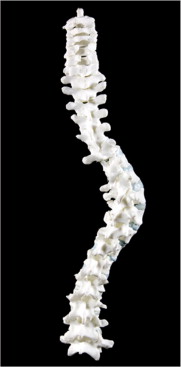Richard III’s spine may not have been as deformed as his ridiculers made out, a post-mortem has revealed.

In his play Richard III, William Shakespeare depicted the Platagenet king as a grotesque figure with a badly formed spine that led to him being a hunchback who could not “strut before a wanton ambling nymph”.
However, a team of experts that has been piecing together the spine of the last king of England to be killed in battle has found that it was nowhere near as bad as Shakespeare would have us believe.
The remains of Richard III were discovered under a car park in Leicester in 2012, and following a fierce battle with his hometown of York, this week it was decided in a High Court ruling that his remains be reinterred in Leicester and finally laid to rest.

Aside from Shakespeare, the history books have made much of the fact that the king’s spine had a kink and it was this marked curve that first led researchers to believe the remains could be those of Richard III.
The findings, published in The Lancet, detail how a team of experts was able to build a replica of the spine using 3D imagery and although it was clear that the king suffered from some form of scoliosis, more serious deformities were unlikely.
The case study reads: “The absence of structural spinal abnormalities, such as hemivertebrae and unilateral bars, makes congenital scoliosis improbable.”
Dr Jo Appleby, of Leicester University’s School of Archaeology and Ancient History, said: “Although the scoliosis looks dramatic, it probably did not cause a major physical deformity. This is because he had a well-balanced curve. The condition would have meant that his trunk was short in comparison to the length of his limbs, and his right shoulder would have been slightly higher than the left, but this could have been disguised by custom-made armour and by having a good tailor.
“There is no evidence that Richard had a limp as his curve was well balanced and his leg bones were normal and symmetric.”
On 23 May 2014 a High Court ruling said that there was “no public grounds for a court to interfere” and Richard III’s remains will now be reinterred in Leicester Cathedral in spring 2015.
View video of the findings
Related articlesRichard III’s remains found in Leicester |
Click here to subscribe! |
|
|||||||||||||||||







 © 2024
© 2024